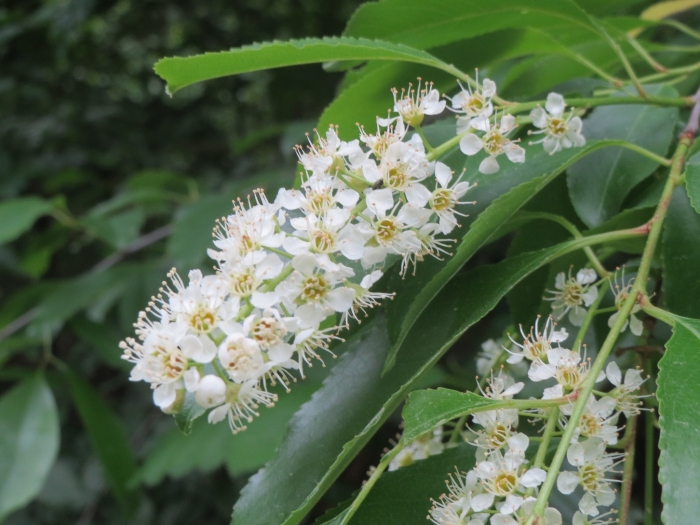Black Cherry
(Prunus serotina)
Black Cherry (Prunus serotina)
/
/

Andreas Rockstein
CC BY-SA 2.0




















































































Estimated Native Range
Summary
The Black Cherry is valued for its ornamental and wildlife benefits, particularly its showy flowers and colorful fall foliage. It is used in reforestation projects, as a specimen tree in large spaces, and for its wood in furniture making. This species prefers full sun to part shade and adapts to a range of soil types, though it thrives in well-drained, acidic soils. While generally low-maintenance, it can be susceptible to pests such as tent caterpillars and diseases like cherry leaf spot. Gardeners should be aware of its potential to self-seed and become weedy in some areas.CC BY-SA 4.0
Plant Description
- Plant Type: Tree
- Height: 50-80 feet
- Width: 15-20 feet
- Growth Rate: Rapid
- Flower Color: White
- Flowering Season: Spring
- Leaf Retention: Deciduous
Growth Requirements
- Sun: Full Sun, Part Shade
- Water: Medium
- Drainage: Fast, Medium, Slow
Common Uses
Bee Garden, Bird Garden, Butterfly Garden, Deer Resistant, Drought Tolerant, Edible*Disclaimer: Easyscape's listed plant edibility is for informational use. Always verify the safety and proper identification of any plant before consumption., Erosion Control, Fire Resistant, Fragrant, Hummingbird Garden, Low Maintenance, Rabbit Resistant, Showy Flowers
Natural Habitat
Mixed forests, forest edges, and clearings
Other Names
Common Names: Wild Black Cherry , Rum Cherry , Wild Cherry , Mountain Black Cherry , Glansbladet Hæg , Späte Trauben-Kirsche , Cerisier D’Automne , Cerisier Tardif , Pruno Tardivo , Romhegg
Scientific Names: Prunus serotina , Padus serotina , Prunus novoleontis , Prunus serotina var. cartilaginea , Prunus fruticosa f. pendula , Cerasus serotina var. montana , Prunus cartilaginea , Prunus serotina var. montana , Cerasus asplenifolia , Prunus capollin var. prophyllosa
GBIF Accepted Name: Prunus serotina Ehrh.